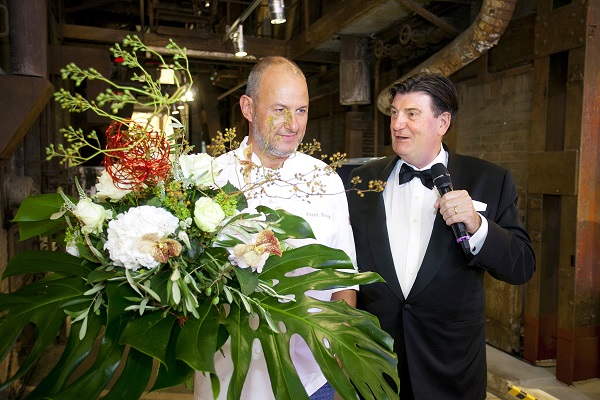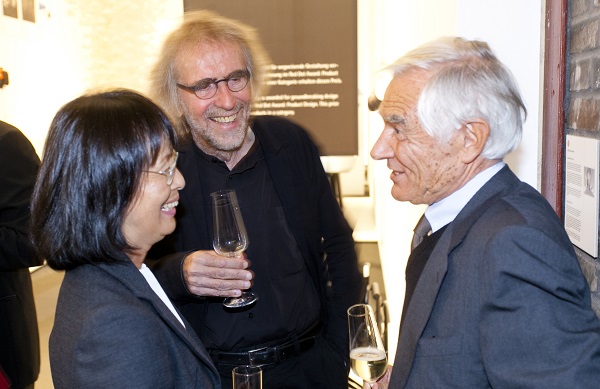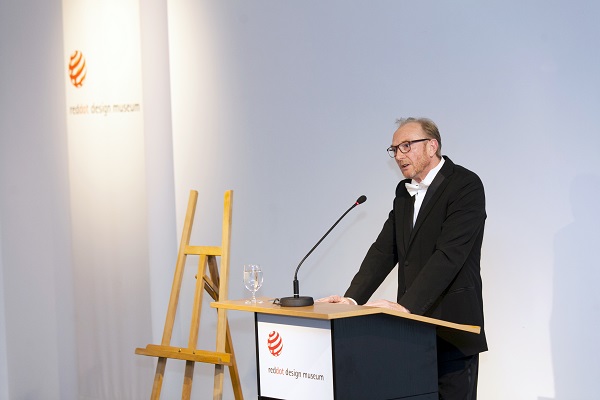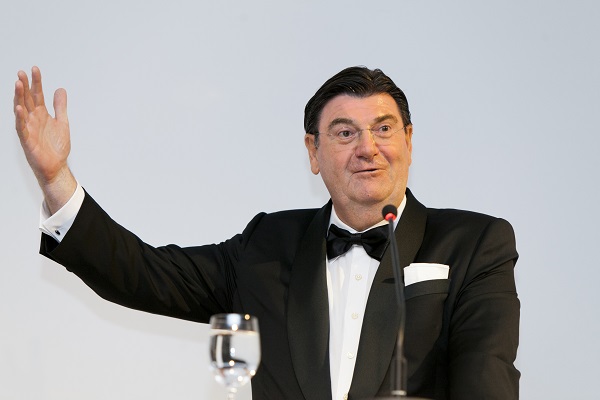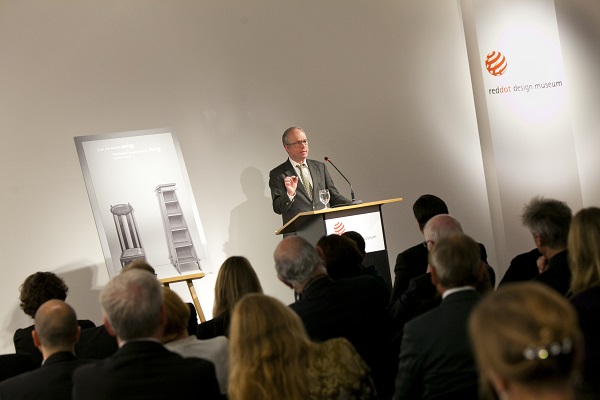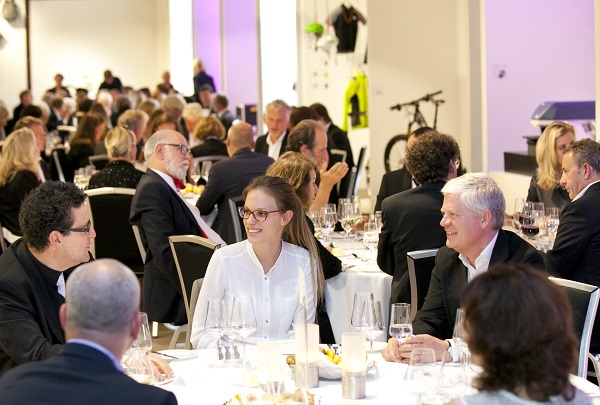Ceremonial act on behalf of 60 years of the Design Zentrum NRW
This year, the Design Zentrum Nordrhein Westfalen is looking back on its 60-year history. In 1955, a jury convened for the first time to select the best products of the year. Shortly thereafter, they were presented in the first “Permanent Show of Elegant Industrial Products” at Villa Hügel. The exhibition with the first winner products was opened on 5 October 1955. It went on to contribute to an appreciation of aesthetics and to the modern-day understanding of design culture and was indirectly the birth of today's Red Dot Award.
Exactly 60 years later - on 5 October 2015 - the Design Zentrum’s success story over the past six decades was celebrated with a ceremonial act. On this occasion, close companions of the institution gathered together at the Red Dot Design Museum Essen to follow a ceremonial address by Prof. Dr. Dirk Baecker and to enjoy a gala dinner of two-star (and tv) chef Frank Rosin. Among the guests were the jury members Renne Angelvuo (Finland), Luisa Bocchietto (Italy) and Wolfgang Meyer-Hayoz (Switzerland), art director of the german business magazine WirtschaftsWoche Holger Windfuhr, Prof. Uwe Loesch, the members of the executive board of the Design Zentrum Vito Oražem, Joseph Rohde, Prof. Dr. Oliver Scheytt and Reinhard Jammers, the former chairman of the Design Zentrum Klaus Jürgen Maack, Philips chief designer Sean Carney, the designer Prof. Peter Schmidt, Alexander Neumeister, Prof. Werner Aisslinger and Tom Schönherr, CEO at Dyson Alexander C. Schmidt, the architect Heinrich Böll and other personalities of design, economy and society.
The executive board of the Design Zentrum NRW Prof. Dr. Peter Zec opened the festive evening with a welcoming speech in which he recalled the background and history of the association, but also emphasised: "The specific feature of our institution is that we are nationally and internationally probably the only institution which sets such a strong focus on the interaction of design and business." Prof. Dr. Dirk Baecker, who proved its influence as one of the most important sociologist in Germany with his publications including "Post heroic management", characterised design as a mechanism of formalisation, formation and presentation of a degradable mistrust”. Therefore, design has an extremely central location, "namely where the interconnection, linking and connecting of organic, social, psychological and neural social processes” are located. "A more central competence can hardly be achieved in our society."
The central social competence of good design emphasised Dirk Baecker also in his contribution to the publication which is published on behalf of the anniversary in the Red Dot Edition: "The elegance of design is the demonstrated, uncovered reflection made visible on the organisation of differences or interfaces between people, things, machines, processes, ideas and stories”. Therefore, the signet of the Red Dot Design Award is a "masterstroke”, because it equips the “object on which it sticks, or the process, which it characterises with a claim, one - ‘if eyes were made for seeing’ - can be checked at a glance".
The ceremonial act was the highlight of the anniversary celebrations. Already on 29 June to 23 August 2015, the exhibition "Enduring, not ultimate form" recounted the journey of the former Haus Industrieform from Villa Hügel to the Red Dot Design Museum in the boiler house converted by Sir Norman Foster at Zollverein World Heritage Site. Patron of the exhibition was Norbert Lammert, the President of the German Bundestag, who also wrote the introductory words for the anniversary publication.
